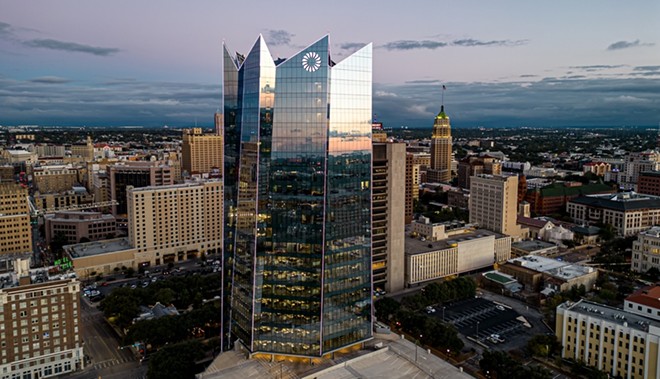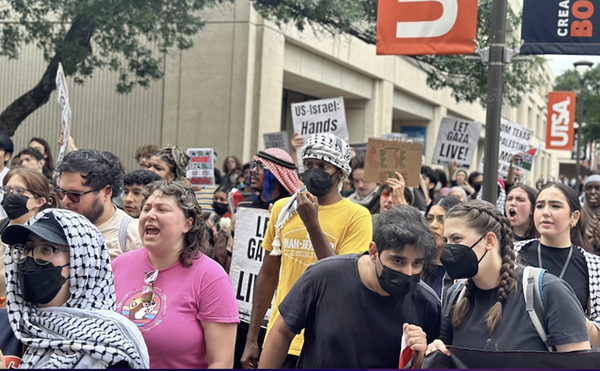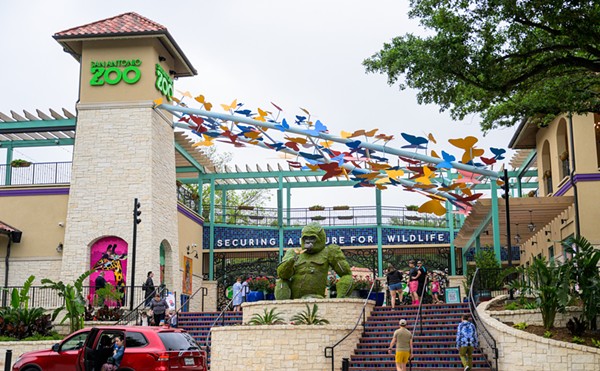
Editor's Note: CityScrapes is a column of opinion and analysis.
First, let's keep two numbers in mind: 27.5% and 39.8%.
The first is the overall vacancy rate for downtown office space in San Antonio in the second quarter of 2023 according to commercial real estate firm JLL. That's pretty high — almost unprecedented. But this is a difficult time for downtowns across the country.
The downtown vacancy rate for Houston office space is 25.2%, JLL's numbers show. It's 20.7% in Chicago, 24.3% in Atlanta. The work-from-home revolution in the wake of the COVID-19 pandemic has shaken the office market everywhere. And its impact goes well beyond office space. Empty space means fewer office workers on downtown streets spending money at restaurants, bars and retail shops.
The situation is particularly dire in San Francisco, where the central business district now has a vacancy rate of 26.2%. A host of retailers have shuttered their stores and the owner of the city's premier downtown mall, San Francisco Centre, has effectively turned the property over to the banks. The city's hospitality situation is perhaps even more dire. The owner of two of the city's largest hotels has stopped making loan payments, claiming it will be years before convention and leisure travel returns to pre-COVID levels.
All of this bad news about downtowns across the country has some urban researchers describing it as a "doom loop." The full impact of working from home has yet to be seen in office vacancies, since much of that space is still under long term lease.
As vacancies rise and fewer employees fill downtown towers on a daily basis, building values drop, slashing local government revenues. Less business for downtown shops and restaurants also slices into sales tax revenues. And with less public revenue, we're likely to see reduced public services — fewer police officers on the streets, less capacity to deal with homelessness and drug abuse.
Lots of debate has swirled around the "doom loop" idea. Many urban analysts say it's far too early to predict the demise of downtowns, and cities and their central areas have shown remarkable resilience over decades.
But then there is that other number.
The 39.8% figure I mentioned at the beginning of this story is the current downtown San Antonio office vacancy rate for class A buildings — the newest, most desirable office space.
That vacancy rate is enormous, a truly unprecedented number — one that raises a host of troubling questions, both about the future of downtown and more importantly, about how we make public policy.
When JLL reported on San Antonio's office outlook in the fall of 2019, things looked genuinely promising. The new Frost Bank Tower had just opened with most of its more than 400,000 square feet pre-leased.
"Class A [rental] rates in the Downtown submarket [are] jumping from $39.05 to $41.20," JLL noted at the time.
Everything looked rosy. Even the center-left Brookings Institution think tank would take particular note of the Frost tower in a report declaring that in 2019, "the skylines of many American downtowns were sparkling with new construction."
That, of course, was before COVID.
But our real downtown problems go well beyond the impact of the pandemic. The deal with Weston Urban that produced the "sparkling" Frost Tower had the city of San Antonio take over the old Frost Bank tower. And as the city gave up the space it had leased in other downtown office buildings to move employees to the building now christened "City Tower," there wasn't any demand for space to fill them.
Our city government still hasn't succeeded in filling up City Tower. Indeed, it's trying to lease four full floors — about 74,000 square feet of Class B space — on the private market.
That comes as new office buildings on Broadway near the Pearl, developed by Silver Ventures and aided by city subsidies, have poached tenants from other buildings.
Simply put, city policy decisions created a game of musical chairs based on the expectation that downtown would boom and that all those new offices — and the old ones — would inevitably be full.
Oops.
But let's not forget former Mayor Julián Castro's "Decade of Downtown" and his argument that lots of new center-city housing was going to fix everything. Apparently, it didn't.
So, now there's a new answer being floated to cure San Antonio's downtown ills: a downtown sports district, with a new arena for the Spurs and a new minor league ballpark. That will, of course, make downtown great again. Just sparkling, in fact.
Right.
Heywood Sanders is a professor of public administration at the University of Texas at San Antonio.
Subscribe to SA Current newsletters.
Follow us: Apple News | Google News | NewsBreak | Reddit | Instagram | Facebook | Twitter| Or sign up for our RSS Feed


















